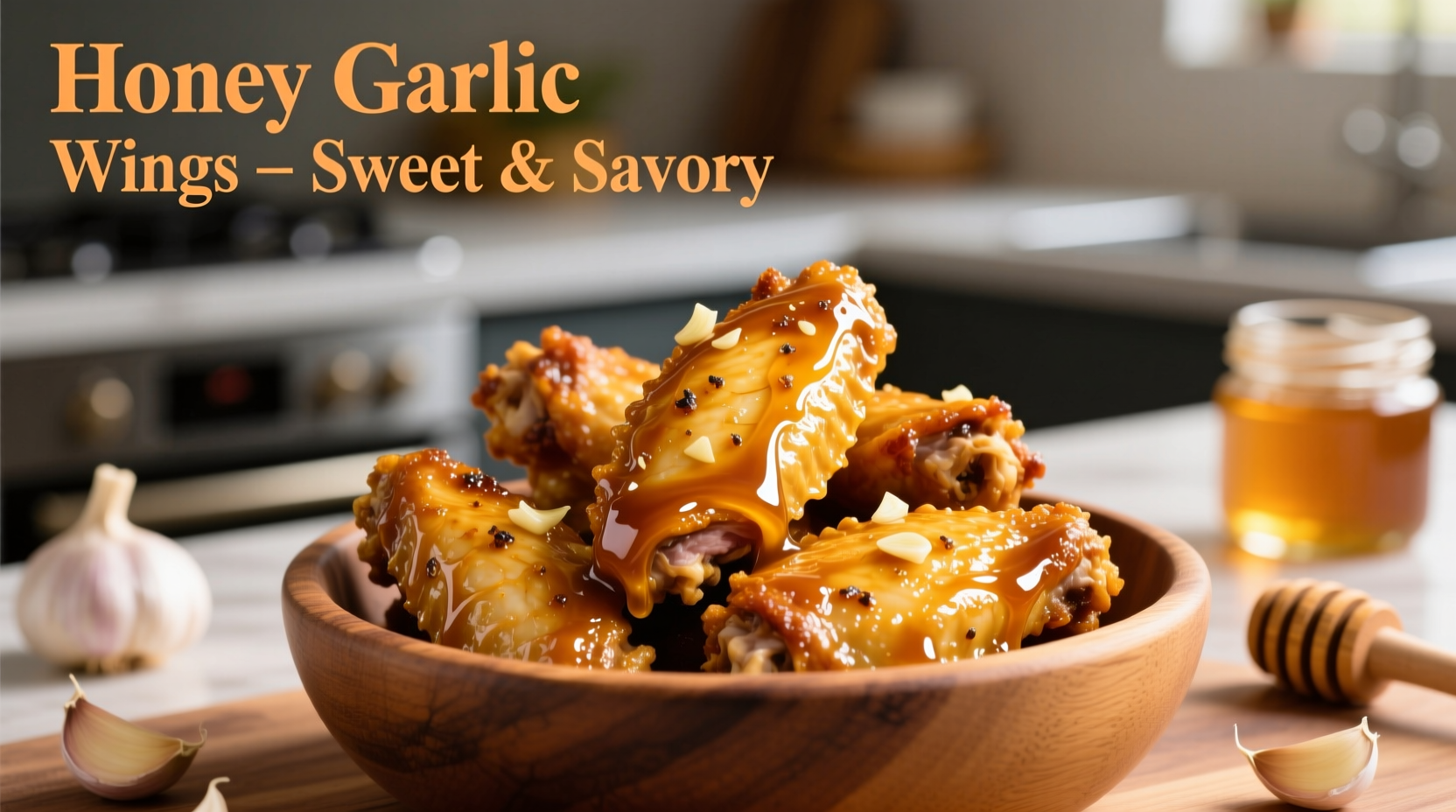Why Honey Garlic Sauce Makes Wings Irresistible
When honey meets garlic on chicken wings, magic happens. The natural sugars in honey caramelize during cooking, creating a glossy, sticky coating that clings perfectly to crispy skin. Garlic's pungent compounds mellow into sweet, nutty flavors when cooked properly, complementing rather than overwhelming the chicken. This dynamic duo has become a wing staple because it delivers complex flavor with minimal effort.
Your Essential Honey Garlic Sauce Formula
Getting the honey garlic ratio right separates good wings from extraordinary ones. Too much honey makes wings cloying; insufficient garlic lacks that signature kick. Our tested formula balances sweetness, saltiness, and heat:
| Ingredient | Amount | Function |
|---|---|---|
| Honey | 1 cup | Creates glossy coating and caramelization |
| Fresh garlic | 6-8 cloves, minced | Provides aromatic base flavor |
| Soy sauce | 1/4 cup | Adds umami and salt balance |
| Rice vinegar | 2 tbsp | Cuts sweetness with bright acidity |
| Sriracha | 1 tbsp | Introduces subtle heat dimension |
Step-by-Step Sauce Preparation
Follow this professional technique to avoid common honey garlic sauce pitfalls:
- Prep garlic properly: Mince fresh garlic cloves finely (not using pre-minced jarred garlic) for optimal flavor release
- Build flavor foundation: Sauté garlic in 1 tbsp oil over medium-low heat for 1-2 minutes until fragrant but not browned
- Add liquid components: Pour in soy sauce, rice vinegar, and sriracha, stirring to combine
- Incorporate honey: Add honey gradually while whisking constantly to prevent seizing
- Thicken to perfection: Simmer 5-7 minutes until sauce coats the back of a spoon
- Finish with fresh elements: Remove from heat and stir in 1 tsp fresh lemon juice and 1/2 tsp grated ginger

Applying Sauce to Wings Like a Pro
The timing of sauce application dramatically affects your final result. Food science research from the Culinary Institute of America confirms that adding sauce during the last 5-7 minutes of cooking creates superior adhesion compared to post-cooking application. Here's why:
- For baked wings: Toss wings in sauce during final baking minutes at 400°F (200°C)
- For fried wings: Dip immediately after frying while wings are still hot and porous
- For air-fried wings: Lightly coat wings with sauce, return to air fryer for 3-4 minutes to set glaze
According to USDA food safety guidelines, ensure sauce-coated wings reach 165°F (74°C) internal temperature before serving to eliminate any foodborne pathogens.
Customizing Your Honey Garlic Experience
Once you've mastered the classic version, experiment with these chef-approved variations:
Heat Level Adjustments
Modify the spice profile to match your preference:
- Mild version: Reduce sriracha to 1 tsp and add 1 tbsp butter for richness
- Medium heat: Keep standard recipe proportions
- Extra spicy: Add 1/4 tsp cayenne pepper and 1 minced fresh red chili
Dietary Adaptations
Make this sauce work for various dietary needs:
- Gluten-free: Substitute tamari for soy sauce
- Vegan: Use maple syrup instead of honey (note: won't caramelize identically)
- Lower sugar: Replace half the honey with sugar-free maple syrup alternative
Troubleshooting Common Sauce Issues
Even experienced cooks encounter these honey garlic sauce challenges. Here's how to fix them:
Burnt Garlic
Garlic burns at 325°F (163°C), ruining the sauce's flavor. Prevent this by:
- Using medium-low heat when sautéing garlic
- Adding garlic after other aromatics like ginger
- Removing sauce from heat just before it reaches desired thickness
Sauce Too Thin
If your sauce won't cling properly:
- Simmer 2-3 minutes longer to reduce
- Add 1 tsp cornstarch slurry (1:1 cornstarch:water)
- Never add extra honey as this unbalances flavor
Serving and Storage Guidelines
For optimal flavor and food safety, follow these professional recommendations:
- Serving temperature: Serve immediately while wings are hot for best texture
- Garnish suggestions: Finish with sesame seeds, sliced green onions, or cilantro
- Storage: Keep unused sauce in airtight container in refrigerator for up to 2 weeks
- Reheating: Warm sauce gently in microwave or saucepan, adding 1 tsp water if too thick
Historical food research from the Oxford Symposium on Food and Cookery shows that honey and garlic combinations date back to ancient Roman cuisine, where they were used to mask preservation flavors in meats. Modern culinary science confirms this pairing works because honey's fructose content caramelizes at lower temperatures than sucrose, creating that signature glossy finish while garlic's allicin compounds transform into mellower flavors when heated.











 浙公网安备
33010002000092号
浙公网安备
33010002000092号 浙B2-20120091-4
浙B2-20120091-4